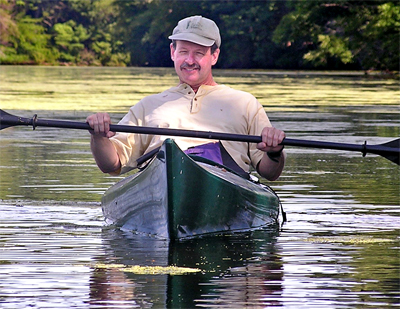Search for The Magic Bullet (2nd in a series): Community-based Environmental Protection
A Fairfield County publication, Wilton Magazine, recently "asked people at random for their thoughts on global warming and what government and citizens should do to address it." 9 of 12 respondents focused on what the government should do; just 3 emphasized choices we as citizens can make to bring about change.
The responses are too few to be representative, but suggest many see global climate change as beyond the local purview, and best left to an unspecified government. This at a time when many in politics, universities and think tanks say environmental protection ought to originate on the bottom rung instead, at the local community level.
"'Community-based environmental protection’ has been the poster child for the environmentalism of the future," says Stephen M. Meyer, Professor of Political Science at MIT, and author of a recent study "The Origins of Community-based Environmental Protection." "Everyone from federal officials to people in non-governmental organizations have touted place-based, local initiatives as part of a solution to environmental problems--not just in the US, but globally as well."

Stephen M. Meyer, co-author of the study "The Origins of Community-based Environmental Protection." Photo by Seth Meyer.
The idea is simply that citizens empowered to manage local resources such as watersheds do a better job of it than federal or state governments. Tack on the fact that many issues about global environmental change occur when control over resources is taken out of the hands of local stakeholders and given over to central governments or agencies many times removed, and the argument for community-based environmental protection (CBEP) becomes clear.
Its promise, Meyer writes, is that CBEP may achieve better outcomes than traditional regulatory approaches. The approach integrates local know-how, sensitivities and values; it's collaborative and enables stakeholders to participate equally and can address issues beyond the reach of governments.
"The argument is that local communities can do a better job than some distant bureaucrat in Hartford or Washington," says Meyer. "Of course, when an idea attracts acclaim, from both the left and the right, you have to wonder if there really is something there." Meyer and co-author David M. Konisky chose to look at wetlands protections in Massachusetts to see if CBEP efforts there proved effective.
"All things being equal, you’d think that if we gave decision-making authority to someone at the local level they could do a better job," Meyer says. "I just want to know if that’s true. We’re sort of 'throwing down the gauntlet' to say enough 'touchy-feely' discussion. It’s nice, but what is CBEP really doing for the environment? That’s where we think people need to go, and we’re trying to push that."
Meyer and Konisky compared "bylawed" towns in Massachusetts, which have stronger local wetlands regulations, with "non-bylawed" towns operating under state law, a minimum standard that conservation commissions must observe. "Was there a systematic difference that points toward better environmental outcomes? Yes. Does it makes a difference in the environment? Yes, with some caveats. It’s not huge, but it’s in the right direction."
It is a direction that supports the notion that compelling contexts and real action emerge first at the local level. Where global issues remain intangible and seemingly far off, local issues and occurrences will always draw attention and promise greater potential to stir communities to act. In the search for a magic bullet, a way to motivate public support for issues as expansive and difficult to get your arms around as global climate change, CBEP offers a ray of hope.
"Many problems are still fundamentally local in nature," Meyer says, "and need to be dealt with at that level. Whether or not there will be grizzly bear or buffalo for my grandchildren to see is not a global issue, but a decision to be made by people in Wyoming or Montana. That’s really where it lies."
Getting involved with CBEP is one way individual citizens can work with their neighbors and in their communities to solve environmental issues big and small, global and local, and not wait for "the government" to take action. "It's not an either or proposition," Meyer says. "I’ve noticed that my students are startled to think that they’re part of the problem, but personal responsibility and personal action plays a very big role, especially in the U.S. where consumption levels are extraordinarily high compared to other parts of the world. When you start thinking that the problem is fundamentally about personal choice--which I believe it is--the best solutions are also about personal choice, and are fundamentally local."
"While the government is sleeping, communities can play a very big role in choosing what they should do and how they will do it," Meyer says. "Communities always have the option of setting up and establishing their own guidelines for environmental protection and conservation." Not only will they likely be a whole lot better off, but the world may be better for it, too.
0 Comments:
Post a Comment
<< Home